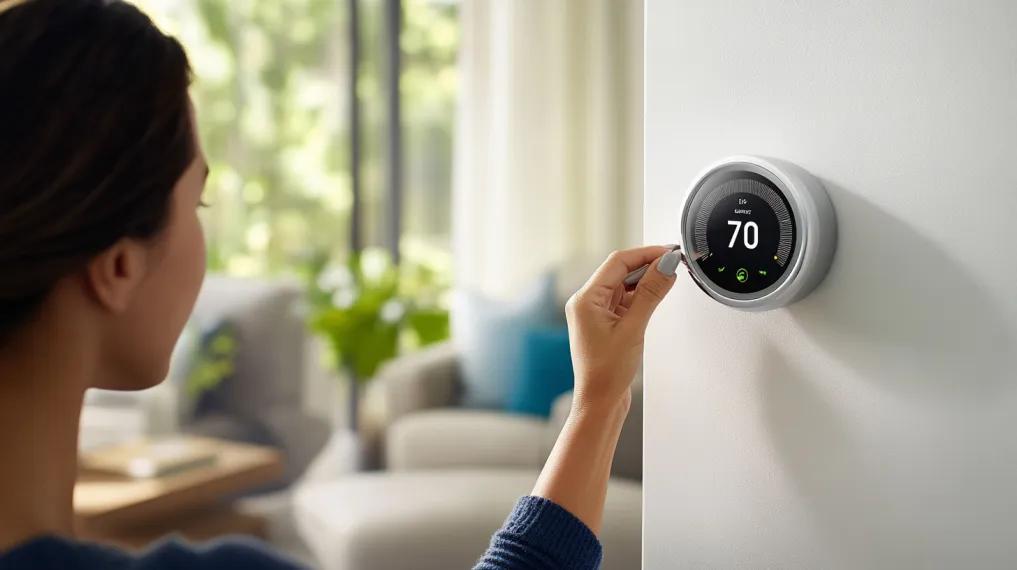What Does a Furnace Control Board Do? A Guide for Homeowners

Your furnace is made up of several complex parts that work together to keep your home warm and comfortable throughout the long winter season. One of the most important components of your heating system is the furnace control board, which directs various components and processes. HVAC.com explains how the control board works and when you may need to consider furnace control board replacement.
What Is a Furnace Control Board?
The furnace control board is a small circuit board located inside your furnace. Essentially, it’s the system’s command center, which coordinates all the furnace’s operations. The control board is linked to several sensors and switches throughout the furnace so it can monitor and manage all the processes, making sure they occur in the right order.
Think of the control board as the furnace’s computer. Just like how your phone or laptop manages many tasks at once, the furnace control board does the same to keep your heating system operating smoothly, safely, and efficiently. Without it, your furnace wouldn’t be able to properly control functions like heating cycles, ignition, and fan operations.
How Does a Furnace Control Board Work?
The furnace control board initiates and runs the sequence of events that make your heating system work. When you set your thermostat to a desired temperature, the control board gets the signal to start heating. Here’s a basic breakdown of how the furnace control board works throughout a heating cycle:
- Thermostat Signal: When your home cools down to the point where the thermostat detects a need for heat, it sends a signal to the furnace control board to initiate the heating process.
- Ignition: Once the control board receives the signal, it activates the ignition system. The furnace may use a hot surface ignitor or a pilot light to start the burners. The control board makes sure this process happens safely.
- Blower Fan Activation: After the burners light up, the furnace begins to generate heat. The control board then signals the blower fan to turn on and distribute warm air throughout your home.
- Monitoring for Safety: Throughout the heating process, the control board constantly monitors different safety sensors, such as flame sensors and limit switches. If any issues are detected (such as overheating or a lack of flame), the control board will shut down the furnace to prevent hazards.
- Shutting Down: Once the home reaches the desired temperature, the thermostat signals the control board to stop the heating process. It turns the burners off, and then shuts the blower down after any residual heat is pushed into your living spaces.
The furnace control board runs the entire heating process. With a properly functioning control board, every step happens in the right order and in a safe manner.
Signs That Your Furnace Control Board Needs to Be Replaced
Since the furnace control board plays such a vital role in furnace operations, any malfunction can cause major issues. Here are some common signs that the control board might be faulty and may need replacement:
- Furnace Won’t Turn On: If your furnace doesn’t respond when the thermostat calls for heat, it could be a sign that the control board isn’t sending the necessary signals to start the system.
- Furnace Turns On and Off Repeatedly: A malfunctioning control board can cause short cycling, where the furnace starts and stops within just a few minutes. This can wear out other parts of your furnace and lead to inefficient heating.
- Blower Fan Runs Continuously: If the blower fan won’t shut off, even when the furnace isn’t generating heat and the fan is set to AUTO mode, the control board may be failing to send the signal to turn it off.
- Error Codes: Many modern furnaces have LED lights or display panels that can flash error codes when something goes wrong. A specific code may indicate issues with the control board. Checking your furnace manual will help you interpret these codes.
- Delayed Ignition: If there’s a long pause between when the thermostat calls for heat and when the furnace actually ignites, this could indicate a control board issue.
If you notice any of these signs, you need to have a professional HVAC technician diagnose the problem. While replacing a furnace control board isn’t a DIY job, understanding these symptoms can help you catch issues early and have them resolved before they lead to a system failure.
How Much Does It Cost to Replace a Furnace Control Board?
The cost of replacing a furnace control board can vary. Here’s a breakdown of what affects the total cost:
- The Furnace Model: Some furnaces use more advanced control boards with additional features, which makes the replacement part more expensive. Basic models tend to have less costly components.
- Labor Costs: HVAC professionals charge for their time and expertise to replace the furnace control board, and labor rates vary in different areas of the country.
- Diagnostic Fees: If the technician needs to troubleshoot the system to confirm that the control board is the issue, there might be a diagnostic fee in addition to the cost of repair parts and labor.